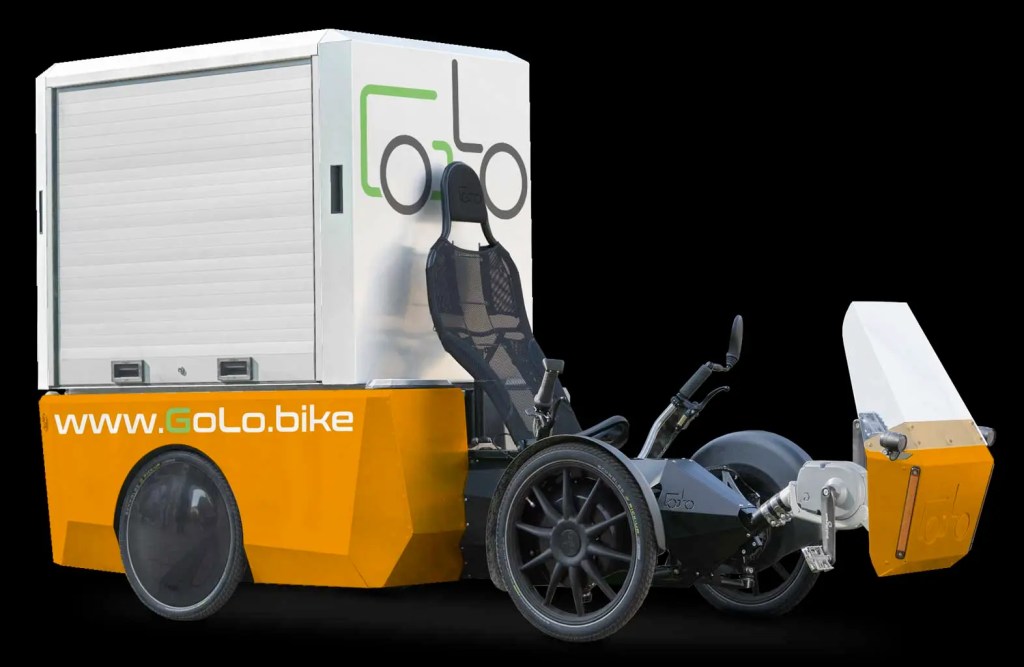
Ever heard of a “digital drive” bike? It might seem like a strange concept, but several companies are developing commercial offerings that use electronics instead of a bike chain to power a bicycle’s rear wheel.
A digital drive is essentially a form of series hybrid electric bike, unlike a conventional e-bike that is more of a parallel hybrid. On many conventional e-bikes, the rider can either power the bike completely manually with the pedals or completely electronically with the throttle. But in a series hybrid e-bike, which is another term for digital drive, the rider powers the pedals manually that then feed directly into a generator to power the motor in the rear wheel electronically, no chain needed.
The chainring (the big gear by the pedals) is replaced by a generator, and the chain is replaced by software that helps mimic the feeling of a bicycle chain by providing similar resistance.
But without any mechanical power delivery, there’s no chain to rust or gears to adjust. That removes nearly all maintenance associated with a bike’s drivetrain, leaving just the tires and brake pads as the only regular maintenance items.
It also provides a simple form of automatic shifting, though in practice it would be more like an infinitely variable gear range. Software control regulates the pedal resistance, meaning that any gear ratio could be achieved from the same pedal cadence. Riders could even program in their optimal customized pedal cadence based on their own comfort. The problem of getting bogged down on an uphill climb or running out of gears on a downhill would cease to exist.
Gearbox/motor drivetrains exist, but they’re pricey and complex. A digital drive setup like this would be a simpler way to achieve a similar effect.

Digital drivetrains typically still use an e-bike battery as a buffer, allowing for some stored energy to compensate for lower rider input, or storing extra energy when the rider is pedaling hard enough to generate more power than is needed for propulsion. But a lighter and more powerful super-capacitor could also be used in lieu of a battery, shaving many pounds off the weight of a typical e-bike battery.
Companies like Schaeffler have shown off ride-by-wire electric bike drivetrains that use this type of series hybrid approach, though with conventional electric bike batteries.
The Danish company Bike2 is another drive maker that has spent years developing its own digital drive setup, though the technology was taken over this year by the Dutch company Alligt.

Electrek’s Take
The idea of digital drive for e-bikes in interesting and not without several advantages, but it also adds in some unnecessary complication, in my opinion.
Top comment by Doug T
A well maintaned traditional bike drivetrain probably has about 99% efficiency, whereas I'm guessing the e-transmission is 80% to 90% at best. Add in another 10lbs or so of weight. Usefulness really depends on the rider skill, as shifting a regular bike isn't difficult to non novices.
It probably doesn't really matter, as most cargo ebikes like the one shown only have pedals as a legal formality. The human is usually only putting out 75 watts or so, while the ebike is dominated by the battery output, likely 200w or more.
For a simple commuter bike, I can understand the argument that the added complexity isn’t worth it. However, I can also see cases where digital drive could be a major advantage.
For cargo bikes, especially larger cargo bikes that have long chain runs, digital drive can clean up the drivetrain and allow designers more freedom in the bike’s geometry. Think of those e-bikes with giant cargo boxes on the rear. There’s usually a long tunnel down the middle at the bottom of the box to allow for the chain to pass through, or the box has to start up much higher. But the lack of a chain could mean the box is mounted much lower, resulting in more cargo space and a lower center of gravity, improving the stability of the bike.
In talking about it with Electrek’s publisher Seth Weintraub, he pointed out that recumbent bikes could also stand to benefit. Many have incredibly long chain runs with long plastic tubes for routing chains around the frame. Digital drive would simplify those complex drivetrains while allowing for an even more stretched geometry.
So while the technology might be a bit overhyped, there appear to be real uses cases that could stand to benefit from digital drive.
FTC: We use income earning auto affiliate links. More.





Comments